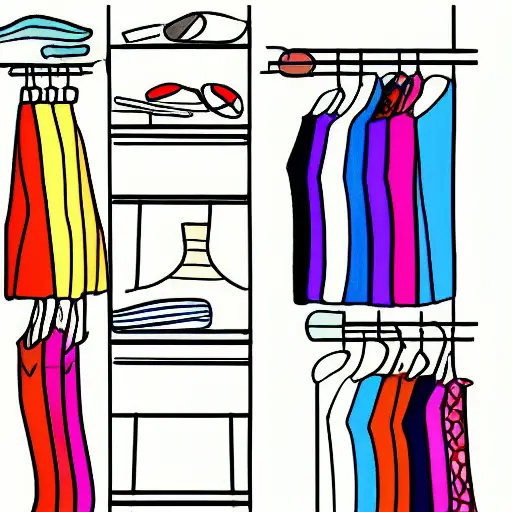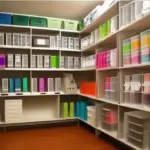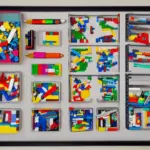Quick closet organizing tips include getting trash bags and bins to sort through the clothes. Once you’ve sorted through the clothes, make simple piles for items you want to throw out, donate, or sell. Make sure you don’t purchase any new clothes while you’re organizing your closet. Save those purchases for a later time!
Creating zones in your closet
Creating zones in your closet is an easy way to organize your clothes and make it easier to navigate. You can use a basket, shelving, and/or a pants rack to create different areas within your closet. By dividing the space into separate zones, you will be able to separate your clothes more easily and put things away more efficiently. No longer will you have to spend hours sorting through piles of clothing to find what you need.
First, you need to take an inventory of your belongings. Next, organize these items by category. You can also try a purge of things you don’t need. This can be a fun and inexpensive way to get rid of unnecessary items. When you’ve finished organizing your closet, you’ll be able to see which items are cluttering up your space and which ones you can donate.
If you have a large closet, consider adding bins to separate items by color. This will make it easier to find the right item quickly, and it will also make it easier to identify duplicates. Once you’ve sorted your items, you can use bins and baskets to maximize your closet space.
Another option is to use different hanging areas to store accessories. Some people prefer to use a central shelf stack, while others prefer to use open shelving. A central stack can provide a great deal of storage space and serve as a divider between different hanging sections. This will help you avoid clutter.
Next, organize your shelves. You can use hooks to hang clothing or other items to free up space on shelves. You can also group items by category. For example, you can place extra toiletries on one shelf and cleaning supplies on another.
Creating storage zones in your closet
One of the best ways to get the most out of your closet space is to organize it into zones. For instance, the primary closet should have clothes you use often but not those that don’t fit or are out of season. Another important area is the dresser in the bedroom. It should have easy-to-open drawers, which are easy to access, and not be stuffed with items. Then you can quickly put things away when you’re done with them.
Another way to improve your closet space is to put certain items on different shelves. For example, you could put your shoe shelves at eye level, which would make them easier to reach when you’re wearing a pair of shoes. You can also have an extra shelf for bulkier items. In addition, you should place frequently used items at the front and center of the closet, where they’ll be easy to see and reach.
If you don’t have enough shelves, add hooks. This will free up space on your shelves. To further organize your closet, group items according to category. For example, extra toiletries can go on one shelf and cleaning supplies on another. By grouping items by category, you’ll be able to keep everything organized and in a place where you can easily find them.
Depending on your preferences, you can create a warm and cold zone in your closet. The kitchen and dining room zones are for cookware and dinnerware, while the family room zone has space for books and video games. The home office zone should have space for electronics and other tech gadgets. Remember, when you’re planning your closet space, think about what types of clothes you wear often and store them appropriately.
Creating zones by style
The first step to creating zones is tracking habits. What items do you constantly need and keep on hand? In the incoming/outgoing zone, place those. In the long-term storage zone, place items that are seldom used but need to be stored for a while. For example, if you frequently use an ottoman to keep office supplies, you can create a zone for these items. For smaller items, consider labeling them and storing them in boxes.
Once you have defined your zones, divide the closet into different sections. The front and middle sections of the closet should be reserved for items that you wear the most frequently. In addition, the back and upper shelves should be reserved for items that you rarely wear. You can also place storage baskets on open shelves to keep unused items out of sight.
Once the piles are organized, divide them into smaller categories. For example, make separate piles for scarves, belts, and work clothes. Label these piles separately by season, material, and heel size. You can also separate clothes into separate sections by type. This makes it easier to find what you need quickly on laundry day and to put them away.
In a small closet space, zone organization is simple enough. You can use baskets, shelves, and pants racks to create specific zones for each wardrobe section. Then, use closet organizers to separate clothing into these zones. This will make it easier to put things away and not have to waste time wading through piles of clothes.
Creating storage zones by color
The key to closet organization is to think of your wardrobe by color and type. This way, you’ll have an easier time finding what you need and putting it away. Using shelf dividers, you can keep piles from toppling over, and storage baskets will keep your junk out of sight. Plus, they’re inexpensive and look chic on an open shelf.
Closet zones can be applied to your walk-in closet, as well. For example, you can have separate areas for shoes, hanging clothes, and long or double hang clothes. You can even create a walk-in zone that’s easy to navigate. Using the right tools, creating zones in your closet can be a breeze.
While it’s possible to organize your closet by color, it can be tedious and time-consuming. Organizing your clothes by color makes it much easier to find the perfect outfit. Closet experts like Closet & Storage Concepts in Modesto, California, offer free consultations so you can get a custom closet that meets your needs.
When organizing a closet, it’s essential to use clear shelving and drawer fronts. This makes it easier to see what’s in each area, and helps you coordinate accessories with them. You can also use extra wall space to keep belts, scarves, and hats. An over-the-door organizer is another good option for hard-to-fold items.
Creating storage zones by size
To make the most of your closet space, create separate storage zones. For instance, create a special area for shoes and boots. You can place a bench or basket underneath the bench to kick off your shoes, and use wall hooks to hold tall boots. You can also use extra shelving to hold seasonal items.
The zones should be arranged according to how you use them. You can store dinnerware and cookware in the kitchen, while DVDs and video games belong in the family room. The same applies to books and toys. You can also create separate zones for tech gadgets. Board games, for instance, can be stored near the kitchen or dining area.
Aside from bins and baskets, you can also use dividers to separate socks, underwear, and bras. Dividers also help you separate shorts and bathing suits. A well-organized closet should be easy to navigate, and you can easily find what you’re looking for.
If you have a small closet, creating zones is a great way to maximize the space. A simple basket can make a difference for a small closet, and you can even use a full closet organizer with shelves and pants racks to divide your closet space. This makes it much easier to find what you need and put them away. It will also prevent you from wading through piles of clothing.












